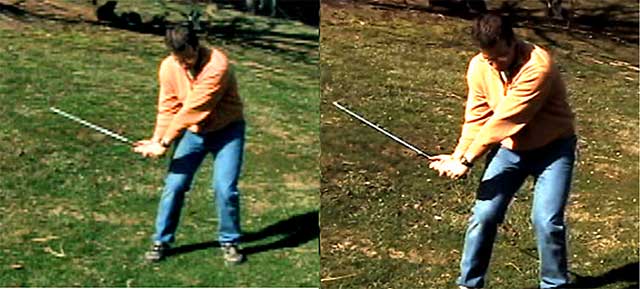Learn the Basics of Deinterlacing Your Online Videos
Jan Ozer is an online video expert, author, and a valued contributor to this site. We're pleased to present this excerpt from his new book Video Compression for Flash, Apple Devices and HTML5.
Have you ever seen a streaming video that looked like Figure 1-3? I call those slices Venetian blind artifacts, and they are typically caused by video shot in interlaced mode with either inadequate or no deinterlacing. Interestingly, this frame is from a trailer for the movie Little Miss Sunshine, which was shot in either film or progressive video, so the interlacing probably appeared after the video was converted to interlaced for DVD or VHS production.
You can see a subtler deinterlacing artifact in Figure 1-4, which is from a Wal-Mart online video advertisement. Specifically, the jaggy lines on the table and back of the computer indicate that the video was shot in interlaced mode and a poor-quality deinterlacing filter was used. Note how the rest of the video is sharp and clear—it's just the diagonal lines that are affected.

Where do these problems come from? Here's the CliffsNotes version:
Deinterlacing filters combine the two fields and apply algorithms to minimize the resulting (usually jaggy) artifacts. You can see this on the left in Figure 1-6. On the right, you can see the same frame, shot with a camera in progressive mode that was mounted alongside the camera shooting in interlaced mode.

These figures lead to several deinterlacing-related conclusions. First, the quality of deinterlaced footage will never be as good as that of progressive footage of the same source. When shooting for streaming, always shoot progressive when it's available.
Second, when working with interlaced source footage, it's always deinterlace your source footage before or during the encoding process. If you don't, you'll see artifacts like those in Figure 1-3 in higher-motion sequences.
Finally, if you see artifacts like those in Figure 1-4, deinterlacing quality isn't as good as it could be. Experiment with different deinterlacing settings offered by your encoding tool until you find the one that works best with your source footage. For example, Figure 1-7 shows the options available in the Sorenson Squeeze encoder, with the default (and best) option selected.

Overall, when working with interlaced source footage, be on the lookout for interlacing artifacts. If you see them, try different deinterlacing settings in your encoder, and don't be afraid to change deinterlacing tools to produce the optimal result.
 Excerpted with permission from the publisher, Doceo Publishing, from Video Compression for Flash, Apple Devices and HTML5, by Jan Ozer. Copyright © 2011 by Jan Ozer.
Excerpted with permission from the publisher, Doceo Publishing, from Video Compression for Flash, Apple Devices and HTML5, by Jan Ozer. Copyright © 2011 by Jan Ozer.
Jan Ozer's article first appeared on OnlineVideo.net